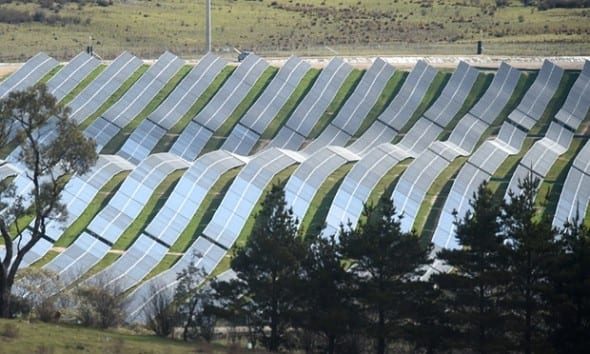A planning dispute standing in the way of the development of one of Australia’s biggest solar farms – a 130MW facility in Clare, Queensland – could be the subject of state government intervention, in a bid to fast-track the process.
In what looks like another example of incumbent industry vs renewables in Australia, development of the $400 million FRV solar PV farm – proposed and approved by the Burdekin Shire council, and by the sugar farmer on whose property it will be built – was appealed in July by Wilmar Sugar, a monopoly sugar harvesting and milling company that makes ethanol from the region’s sugar cane byproducts.
Wilmar, along with local farmers Lawrence and Patricia Brotto, have argued that the development will take up “good quality agricultural land” in conflict with the state’s planning policy, and have questioned the necessity for the solar plant in the region.
But this week, Queensland’s Deputy Premier, Jackie Trad, said the Palaszczuk government was considering a ministerial ‘call in’ of the proposed project, to head-off a potentially long and costly dispute.
Indeed, this is not the first time Wilmar – which bills itself as Australia’s leading sugar and renewable energy company – has mounted legal challenges to other renewables developments in the region.
In August 2013, the chairman of rival ethanol fuel producer, Austcane, accused the company of trying to stifle competition by development by dragging it through the Planning and Environment Court.
“Currently Wilmar owns all the (ethanol) processing facilities in the district and have a monopoly,” Tolbat Cox told ABC Rural at the time.
“One other competitor in the district doesn’t suit them.”
On the matter of the solar farm, Burdekin Mayor Bill Lowis said council had requested Trad’s intervention, due to concerns about the delaying of the project it believes would ultimately benefit the farmers in the region, by lowering wholesale electricity prices.
“It’s a $400 million project that will employ about 200 people in the establishment phase, plus local providers, and a team of about five people to stay on and run it. It’s a great project and we don’t want to lose it,” Lowis said.
Indeed, the project would be a big deal for Queensland in general, which, despite being Australia’s great solar hope (aka the Sunshine State), has delivered very little on the utility-scale front.

It would also be a feather in the cap of the state Labor government, which earlier this year confirmed its commitment to generating 50 per cent of its electricity needs from renewable energy by 2030.
For her part, Minister Trad says she has given “all relevant parties” 20 days to have their say on the proposed “call-in” and is expected to then make a decision by September 10, after which she has more time to assess and decide whether to approve the solar project or not.
“We made a commitment to listen to the community and this proposed ‘call in’ notice will provide an opportunity for all interested parties to have their say,” Trad said in a statement.
“I will consider the development application in relation to the economic and environmental interests, and ongoing sustainable development of the state.”










